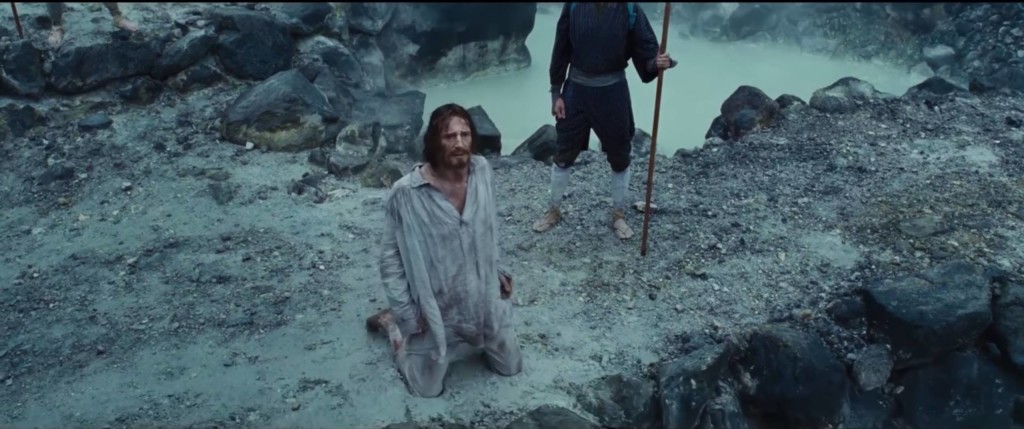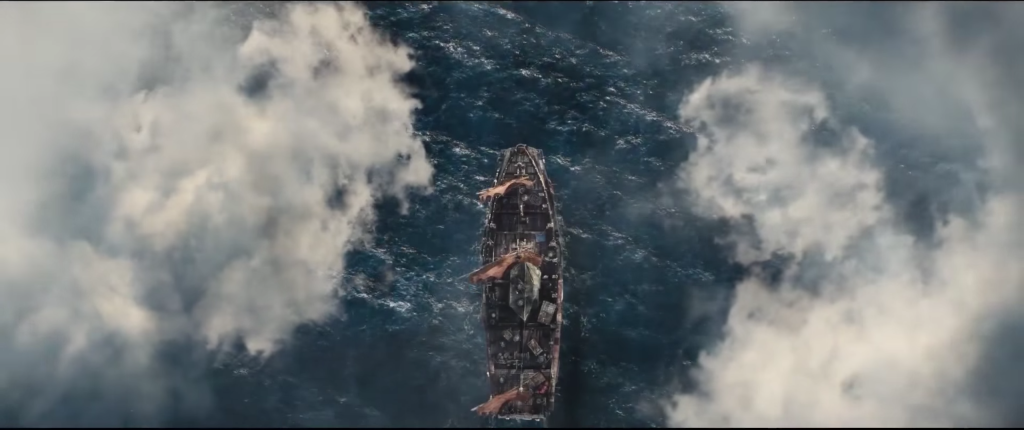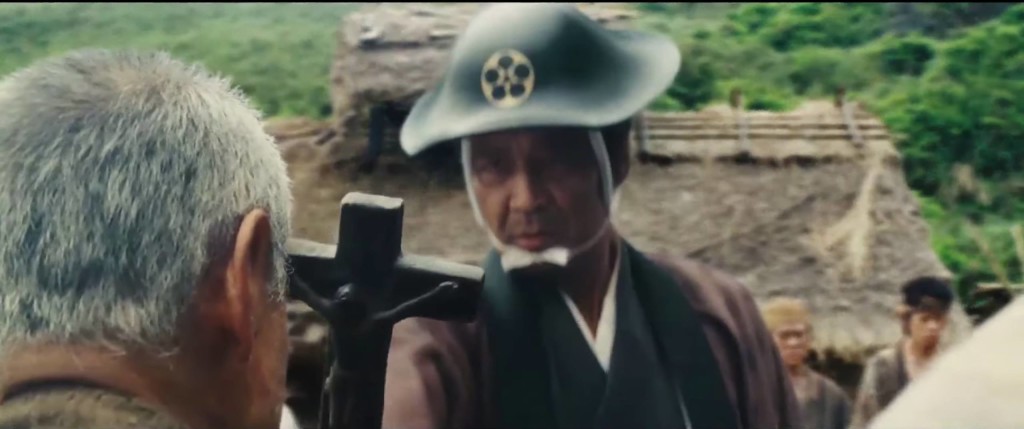Over the course of human history, Religion has caused as much despair as much as it has given hope to humanity. The cause of despair has always been the same – “My path is the only true path and every other path only leads to the gates of hell”. People passionate about their faith have often transcended the lines of humanity to defend their God, who ironically is all powerful and also the creator of this infinite multiverse. But, among believers and non-believers, who causes more suffering to people? The priest who asks his followers to sacrifice this life by staying true to the path of god, for a pain-free afterlife? Or the tormenter who will go to any lengths to cut the roots of a faith he doesn’t believe in? The questions Martin Scorsese’s Silence asks are complex and will linger in your mind for longer than you would want to.

Two young priests from Portugal set out to Japan to find the truth about a renowned Father’s public defection of Christianity and in their quest for truth, their own faith is tested to the extreme. Father Rodrigues (Andrew Garfield) and Father Francisco (Adam Driver) travel to remote islands in Japan in search for their teacher- Father Ferriera (Liam Neeson) but rather turn out to be a ray of hope for many Japanese Christians who still practice the faith in secrecy and risk torturous death by the inquisitors army. Both the priests undergo a tumultuous journey where they are subjected to grave torture, both physical and mental. Many times they break, their faith is lost, for the God, they pray to, always remains silent. Silence as a story never takes any sides, it tells the story of faith from both the sides of the line, being as impartial as possible, but what it does not shy away from is conveying that faith always triumphs humanity, for humans seize being humans when protecting their faith.

Silence is a 3-hour long journey of faith that starts at its strongest and ends up dejected, defeated and dead by the time the quest ends. It is an uncomfortable movie to watch, partly because of its realistic depiction of the savagery that ensued in Japan post the Christian persecution and partly because of the tremendous performances by Andrew Garfield, Adam Driver, Leam Neeson and the Japanese support cast. All the Christian characters in the movie are complex and broken because their faith is constantly challenged in a hostile land and that is what makes this movie such a splendid watch. It doesn’t shy away from asking uncomfortable questions, it never shows its bias and lets the audience form the opinion based on their own judgment of right and wrong. Faith itself is depicted in various phases in the movie- The faith of Father Rodrigues to be precise, is subjected to incredible hardships and yet he always picks it up every time his faith falls down until it is completely shattered with he climactic revelation towards the end, or does it ?.

Rodrigo Prieto’s the cinematographer of the movie is nominated for an Oscar for Silence and rightly so. Uncomfortable sequences of torture, disdain, and pain are shot so realistically in natural light that this project is going to be studied by avid cinematographers for years to come. Martin Scorsese has apparently waited for two decades to direct this story because he felt he was not skilled enough to convey the complexity of the story in the way it should come on screen. But now that he has finally filmed this, he should be proud because every frame of the movie complements the nature of the quest the priests undertake – gut-wrenching yet rewarding.
My only qualm about the movie is that it’s not directed in the way that the masses would understand the story but maybe that was impossible to do so considering the difficult and uncomfortable theme. People who like intellectually challenging stories would appreciate it and the people who don’t want movies to hit them back where it hurts would probably find it a snooze fest. Whatever be the case, Silence will be remembered as one of Scorsese’s best works till date.
Over the course of human history, Religion has caused as much despair as much as it has given hope to humanity. The cause of despair has always been the same – “My path is the only true path and every other path only leads to the gates of hell”. People passionate about their faith have often transcended the lines of humanity to defend their God, who ironically is all powerful and also the creator of this infinite multiverse. But, among believers and non-believers, who causes more suffering to people? The priest who asks his followers to sacrifice this life by staying true to the path of god, for a pain-free afterlife? Or the tormenter who will go to any lengths to cut the roots of a faith he doesn’t believe in? The questions Martin Scorsese’s Silence asks are complex and will linger in your mind for longer than you would want to.

Two young priests from Portugal set out to Japan to find the truth about a renowned Father’s public defection of Christianity and in their quest for truth, their own faith is tested to the extreme. Father Rodrigues (Andrew Garfield) and Father Francisco (Adam Driver) travel to remote islands in Japan in search for their teacher- Father Ferriera (Liam Neeson) but rather turn out to be a ray of hope for many Japanese Christians who still practice the faith in secrecy and risk torturous death by the inquisitors army. Both the priests undergo a tumultuous journey where they are subjected to grave torture, both physical and mental. Many times they break, their faith is lost, for the God, they pray to, always remains silent. Silence as a story never takes any sides, it tells the story of faith from both the sides of the line, being as impartial as possible, but what it does not shy away from is conveying that faith always triumphs humanity, for humans seize being humans when protecting their faith.
Silence is a 3-hour long journey of faith that starts at its strongest and ends up dejected, defeated and dead by the time the quest ends. It is an uncomfortable movie to watch, partly because of its realistic depiction of the savagery that ensued in Japan post the Christian persecution and partly because of the tremendous performances by Andrew Garfield, Adam Driver, Leam Neeson and the Japanese support cast. All the Christian characters in the movie are complex and broken because their faith is constantly challenged in a hostile land and that is what makes this movie such a splendid watch. It doesn’t shy away from asking uncomfortable questions, it never shows its bias and lets the audience form the opinion based on their own judgment of right and wrong. Faith itself is depicted in various phases in the movie- The faith of Father Rodrigues to be precise, is subjected to incredible hardships and yet he always picks it up every time his faith falls down until it is completely shattered with he climactic revelation towards the end, or does it ?.

Rodrigo Prieto’s the cinematographer of the movie is nominated for an Oscar for Silence and rightly so. Uncomfortable sequences of torture, disdain, and pain are shot so realistically in natural light that this project is going to be studied by avid cinematographers for years to come. Martin Scorsese has apparently waited for two decades to direct this story because he felt he was not skilled enough to convey the complexity of the story in the way it should come on screen. But now that he has finally filmed this, he should be proud because every frame of the movie complements the nature of the quest the priests undertake – gut-wrenching yet rewarding.
My only qualm about the movie is that it’s not directed in the way that the masses would understand the story but maybe that was impossible to do so considering the difficult and uncomfortable theme. People who like intellectually challenging stories would appreciate it and the people who don’t want movies to hit them back where it hurts would probably find it a snooze fest. Whatever be the case, Silence will be remembered as one of Scorsese’s best works till date.